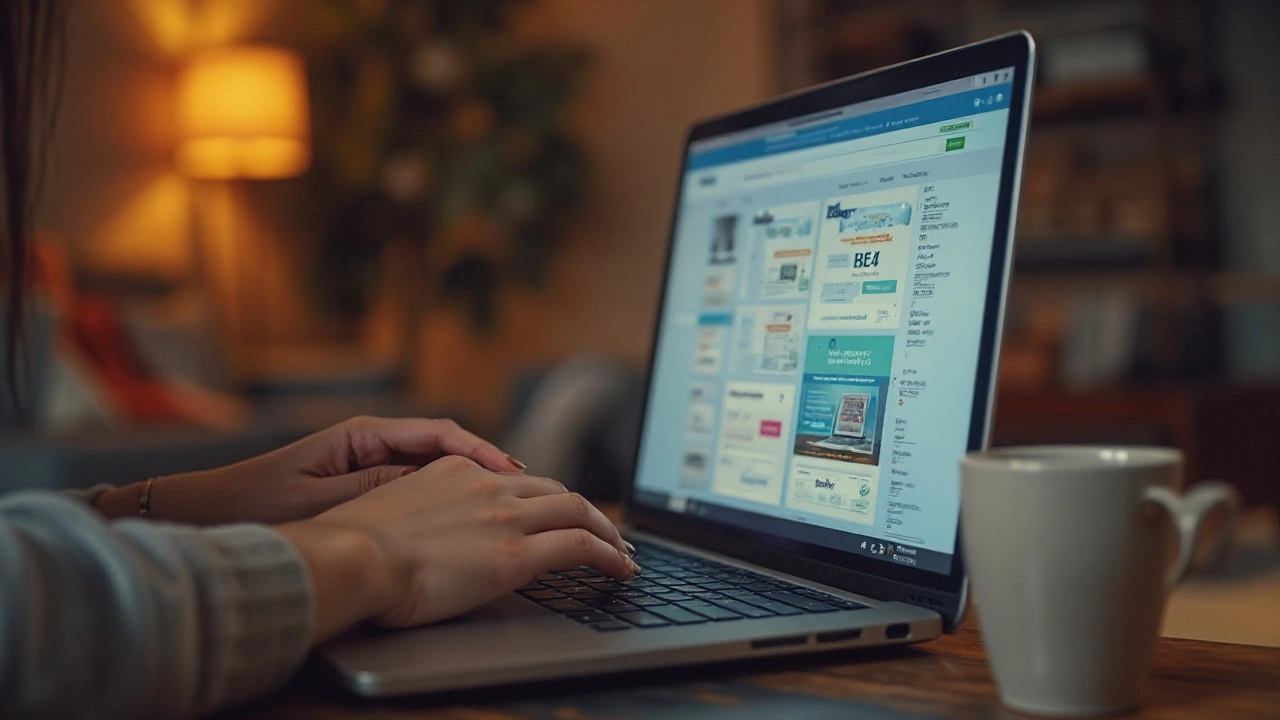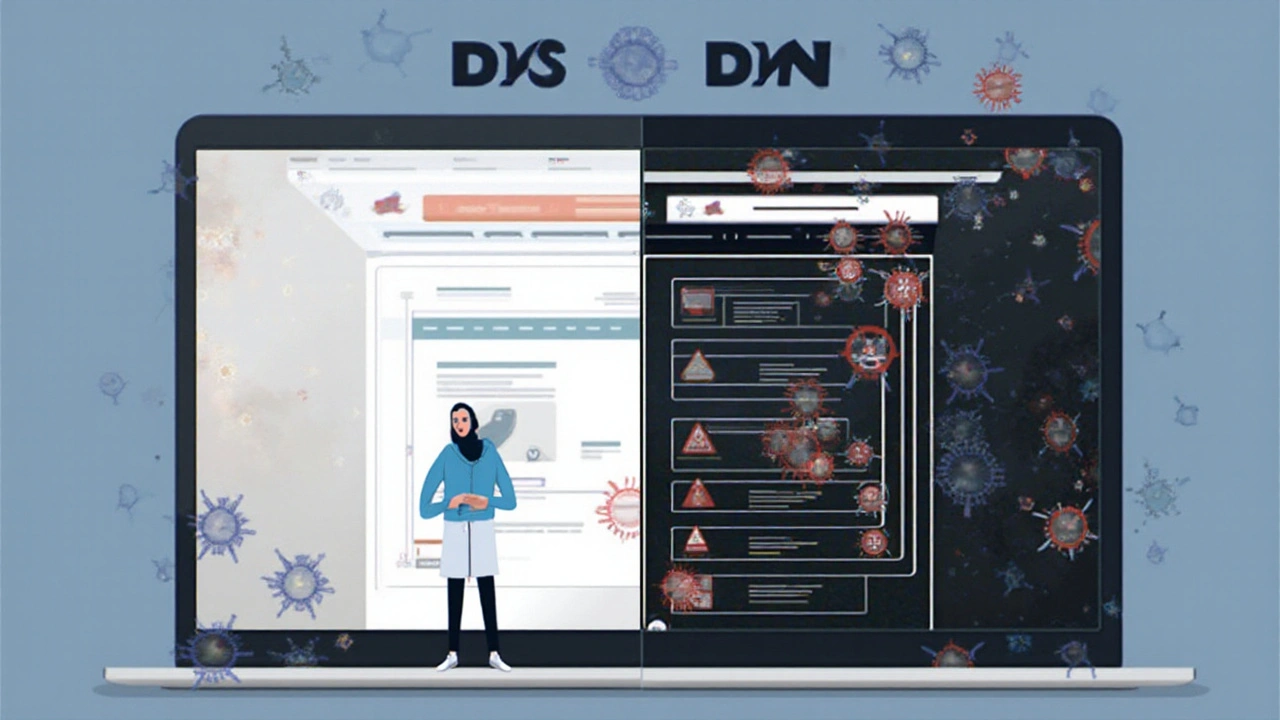Where and How to Buy Diclofenac Online Safely in 2025

Remember that time you twisted your ankle, and the pain just wouldn't quit? You probably heard about Diclofenac—it's a go-to for all kinds of aches, from sprained ankles to nagging back pain. Now, getting it without leaving your home sounds dreamy, right? But when prescriptions mix with the vast wild west of the internet, things can go sideways in a hurry. Not every site out there delivers what it promises (yep, a few bad apples will try to ship you mystery pills sending you straight to Google trying to figure out what you just took). Hollywood-level drama? Nope, just another Tuesday for someone hunting for pain relief online. Let's zero in on the real stuff: how to snag Diclofenac online without risking your health, money, or sanity.
Understanding Diclofenac: What Exactly Are You Buying?
Diclofenac isn’t just another painkiller hanging out on pharmacy shelves. It’s a non-steroidal anti-inflammatory drug (NSAID), born in Switzerland in the late 1970s and now used across over 100 countries. Doctors recommend it for swelling, pain, and even some types of inflammation linked to arthritis. But don’t expect fairy dust—Diclofenac is strong, comes in tablets, gels, patches, and injections, and gets doled out in different strengths depending on the zap you need against pain. Unlike paracetamol or ibuprofen, you can’t always grab it straight from the shelf in some countries; several require a prescription for doses above a certain threshold because misuse can mess up more than just your pain sensors.
Now, if you want numbers, here's something solid: A 2024 global pharmacy report put Diclofenac on the top 20 list of prescribed NSAIDs (even beating out some other big names for arthritis). The World Health Organization also keeps it on their "essential medicines" roster. But before you go trigger-happy hitting ‘Add to Cart’, you should know Diclofenac can tag your stomach, heart, or kidneys—especially if you ignore recommended doses or blend it with random supplements. No one needs a hospital trip from what was supposed to be a fix for a sore knee.
Speaking of blending, people often mix up gel and oral versions. Don’t do this casually: topicals are for local pain, pills go systemic. Many who end up calling poison control have mixed them like they’re making a cocktail. And those “supposedly herbal” alternatives showing up in online search results? Most don’t even contain real Diclofenac. The FDA shut down dozens of shady sites in 2023 that laced their “pain creams” with avoid-at-all-cost mystery chemicals or nothing at all.
| Form | Common Uses | Usual Access | Key Warning |
|---|---|---|---|
| Tablet | General pain, arthritis | Prescription in most countries | Stomach, kidney risks |
| Gel/Cream | Localized joint or muscle pain | May be OTC or prescription | Avoid on broken skin |
| Patch | Muscle aches | Often prescription | Skin irritation possible |
| Injection | Doctor-supervised cases | Hospital/clinic only | Only under professional care |
Here’s the kicker most folks miss: the cost difference between online and brick-and-mortar pharmacies can look huge at first glance. Some online shops will show a price so low, you might wonder if they made a typo. Don’t get sucked in. Ultra-cheap meds? Ninety-nine times out of a hundred, it’s either a fake, expired, or some pill that’s seen more mileage than your car. Stick with sources that offer clear documentation—they’ll show pill images, batch numbers, and even customer reviews, not just a “buy it now” button and missing contact info.

Picking a Reliable Online Pharmacy: What Actually Works?
So you’re revved up to buy Diclofenac online? Cool, but here’s the catch—there’s a jungle of fake or unregulated pharmacies, especially ones with names like “BestMedsNow.com” and flashing “Super Discount” banners. Sloppy? Maybe. Dangerous? Definitely. To spot the legit players, look for a license or registration with organizations like the U.S. NABP, Canada’s CIPA, or Europe’s EU Common Logo. Real pharmacies love showing off those badges. If you can’t find certification, keep looking—there’s no reason to roll the dice on your health.
Customer service is another dead giveaway: if you shoot them a question about your order and get just a robot or radio silence, move on. Real pharmacies give you direct answers, plus a phone number or live chat that actually works. And if they’re willing to ship Diclofenac without any request for a prescription at all (when your country clearly requires it)? Big red flag, friend. The responsible sites always double-check your prescription either by letting you upload it, fax it, or get a quick video consult if you don't have one handy yet.
You can also use comparison websites (like PharmacyChecker or LegitScript) to verify you’re not about to become a cautionary tale. The easiest trick? Google the pharmacy’s name plus “scam” and read a page or two of recent results. If you see nightmare stories about empty envelopes or mystery drugs, run! Verified sites also encrypt your payment and personal info—no one wants their bank details floating around, right?
Let’s talk payment: Pay attention to transparent pricing. Are costs, taxes, and shipping fees crystal clear? Steer away from pharmacies forcing you into weird payment methods (cryptocurrency from a brand-new account, wire transfers to random banks, etc.) because refunds or disputes are almost impossible. Safe pharmacies usually support traditional options like cards or PayPal. A 2025 survey found about 88% of people who bought meds online from verified sites using credit cards reported zero payment issues, but the rate dropped to 61% on sites without clear payment policies.
One more point for the checklist: look for return and refund policies. Solid pharmacies have nothing to hide and are willing to fix issues, whether it’s shipment delays or incorrect products. If you can’t get after-sale support, that’s your cue to bail—you’re not buying socks here. And always check the pharmacist’s name and credentials if it’s displayed. This isn't just trivia: in 2024, European watchdogs busted a handful of scam sites by tracking fake pharmacist profiles.
- Check for verification badges and registration numbers.
- Read independent reviews—not just the glowing ones on the pharmacy’s own site.
- Ask customer support any question about their product or process.
- Make sure prescription rules match official laws in your country.
- Avoid any site that uses high-pressure sales tactics like “BUY NOW—Only 2 left!”
Got allergies or medical issues? Make sure the online pharmacy lets you review ingredients and potential interactions. Some offer built-in “medication checkers” to prevent accidental mix-ups, which is pure gold when you’re juggling more than one prescription at a time. If your pharmacy actually follows up to double-check your order or dosage, that’s a green flag—they’re looking out for you, not just your wallet.

Ordering Diclofenac: Safest Steps, Real Costs, and Shipping Facts
Ready to order? Here’s where most people trip up: not reading the fine print or jumping in before getting their prescription ready. Reliable sites want a scan or photo of your Rx. If you don’t have one, some legit platforms offer a telehealth consult for a few extra bucks—usually a quick chat with a licensed doctor who can write you up (if you fit the bill health-wise). Don’t try to “repurpose” your old prescription or borrow your neighbor’s; pharmacies actually check the dates and details in 2025 because of some high-profile insurance frauds a year ago.
Prices can be all over the place. For example, in August 2025, UK-based online pharmacies list a month’s supply (30 tablets at 50mg each) at around £25-£35, while in the US it’s closer to $35-$60. Direct-from-manufacturer pharmacies in Canada sometimes offer lower prices—but remember, international shipping bumps up the cost. Some insurance plans even cover online orders if you use their preferred partners, so check your health plan’s online ordering option—you might save a chunk without realizing it.
Once you order, pharmacies usually send tracking confirmation within one or two days. Here’s a tip: Pick registered shipping that requires a signature. Yes, it's a bit more of a hassle, but you won’t want a box of real medication sitting in your mailbox all afternoon. And be smart about timing. Many sites ship Mondays to Thursdays to avoid your meds sitting in a warehouse over the weekend, killing their effectiveness if exposed to heat or cold. Delivery times differ: domestic orders can land in three to five days, international orders might take anywhere from a week to two weeks, especially with increased customs inspections following a wave of counterfeit busts in late 2024.
Watch for emails or texts confirming your order, tracking, and delivery. If a pharmacy doesn’t give shipping estimates or communication at all, that’s a problem. When the package arrives, look for:
- Tamper-evidence tape or seals on the box.
- Original blister packs or tubes, not loose pills in baggies.
- Visible expiry dates and manufacturer info.
For anyone traveling, keep the invoice or receipt from the online pharmacy. Certain countries can be super strict about importing medication for personal use—showing legit paperwork avoids headaches at customs (plus, you have proof in case your luggage has a run-in with airport security). And don’t forget to check local laws before ordering internationally; places like Japan or the Middle East have some intense import restrictions on even basic NSAIDs.
| Region | Prescription Required for Online | Usual Delivery Time |
|---|---|---|
| USA | Yes | 3-7 days domestic, 7-14 days international |
| UK | Yes | 2-5 days domestic, 7-10 days EU |
| Canada | Often yes | 2-5 days domestic, 7-12 days outside Canada |
| EU (other) | Yes | 3-7 days |
One last heads-up: Always snap a photo of your medication when you get it—packaging, pills, and batch info. If anything looks shady (wrong color, weird label, strange smell), contact the pharmacy right away and stop taking it. Drug authenticity apps like MedSnap or PharmCheck are handy tools in 2025; one quick scan and you’ll know if what you got is real.
To wrap it up: buying Diclofenac online is about more than just clicking a button. You need to know where to look, how to spot the good guys (the real, certified pharmacies), and how to protect yourself from fakes. Skip the shortcuts and follow a checklist—your pain relief shouldn’t come at the cost of your health. And remember, nobody has to “just deal with it” or gamble when safer online options exist. Pain and inflammation can be tackled in smart, safe ways—even from the comfort of your couch.
Andrew Stevenson
August 13, 2025 AT 23:20Nice rundown — solid primer for folks who aren't used to vetting online pharmacies.
Worth adding that when you see a pharmacy claiming to ship internationally from multiple countries with the exact same SKU numbers, it's often a red flag for parallel imports or repackaged stock.
Also, if you're monitoring for interactions, be aware that diclofenac inhibits COX enzymes differently than ibuprofen, so it can have distinct cardiovascular risk profiles in susceptible patients — nothing to panic about, but something your prescriber should consider if you have ischemic heart disease or uncontrolled hypertension.
Kate Taylor
August 14, 2025 AT 21:33This article is really thorough and approachable — I appreciate the safety checklist at the end.
One practical tip: save screenshots of the pharmacy’s certificate pages and your order confirmations in a folder that’s timestamped. That makes disputes and customs questions much easier to handle.
If anyone here uses telehealth consultations through pharmacies, share your experience: was the clinician actually licensed in your region? That’s been hit-or-miss in my experience.
Theunis Oliphant
August 15, 2025 AT 19:46Allow me to be blunt: the cavalier way people toss around the phrase "just buy it online" is precisely why medicine procurement should remain a somewhat dignified, regulated exercise rather than a bargain-hunting sport.
I am not suggesting hysteria, merely prudence. There is a qualitative difference between a pharmacy that displays its regulatory accreditations and one that posts stock photos and a toll-free number. If you appreciate order and clarity in other areas of life, bring that same standard to your medication purchases. Demand provenance: manufacturer, batch, expiry, national authorisation number. If a site cannot or will not provide those simple facts, it is behaving in bad faith.
Many folks confuse price with value. Thirty tablets for half the price might look like a triumph, until you realise those tablets have dubious labelling, no tamper seal, or a CA warning stamped on the leaflet. One must ask: what is the total cost of that convenience? If the answer includes extra clinic visits, digestive upset, or worse, then the bargain is not one.
I insist that readers treat pharmaceuticals as they would fine instruments: with respect, proper storage, and a measured expectation of risk. If you believe that a topical cream and an oral tablet are interchangeable because both 'help pain', you are mistaken. They occupy different pharmacokinetic realms. To conflate them is sloppy and, frankly, dangerous.
Finally, cultivate a small circle of trusted sources. A single reliable pharmacy, even if slightly more expensive, will save you grief. An ounce of verification is worth a pound of regret. Please, check the paperwork. Check the seals. Keep receipts. Your future self will thank you.
India Digerida Para Occidente
August 16, 2025 AT 18:00Good points above, especially about telehealth and licensing.
I just want to add something practical: when a site offers a video consult, ask to see the clinician's registration number and country of licence before buying — many will provide it without fuss. If they dodge or give vague answers, that's a no-go.
Also, screenshots of the consult (with the clinician's name and licence visible) are useful if customs questions arise later. It sounds nitpicky, but I've had to show documentation once and those screenshots closed the loop fast.
Hannah Mae
August 17, 2025 AT 16:13Short and sweet: always check expiry dates.
Iván Cañas
August 18, 2025 AT 14:26Friendly reminder: insurance rules vary widely for online pharmacies.
Before ordering, check whether your insurer recognises the vendor or if you need to use a preferred partner to get reimbursement.
Also, if you rely on maintenance dosing, syncing refills with an autopilot schedule helps avoid lapse periods where people self-medicate with less appropriate OTC options.
Jen Basay
August 19, 2025 AT 12:40Quick question: does anyone here use authenticity-checking apps like MedSnap regularly? 😊
I scanned a cream last month and the app flagged a mismatch in embossing and print font — the pharmacy replaced it without fuss but I'm curious if others have had similar experiences.
Hannah M
August 20, 2025 AT 10:53I use MedSnap sometimes — saved me once when a repackaged bottle had a different font on the leaflet.
They were super helpful and the pharmacy refunded immediately, which made me trust that vendor again. Totally recommend scanning packaging if you can.
Poorni Joth
August 21, 2025 AT 09:06why ppl think everything online is safe? u cant even trust reviews anymore, most r fake.
also, some sites seem proud of dodgy shipping options like "no customs" — that screams illegal import. dont be lazy, follow rules or suffer consequences. i once tried a cheap cream and had a rash for two weeks bc it had random additives. lesson learned.
Yareli Gonzalez
August 22, 2025 AT 07:20You're right to call out fake reviews and dodgy shipping — those are big issues.
Try using multiple review aggregators and look for consistent complaints rather than single glowing testimonials. Also, check whether independent lab tests are available for the product; that's a strong positive sign.
And if you ever get a suspicious product, photograph everything and report it to both the seller and the appropriate regulator in your country — it helps others.
Andrew Stevenson
August 28, 2025 AT 18:53For clinicians and technically-minded readers: when assessing risk for NSAID therapy like diclofenac, consider both dose and duration. The area under the curve (AUC) increases with extended dosing and correlates with systemic exposure; short courses limit systemic risk for most patients.
Renal clearance and hepatic metabolism are also relevant. Diclofenac has significant hepatic metabolism via CYP2C9; co-prescription with strong CYP2C9 inhibitors will increase plasma levels and risk. If a patient is on warfarin or a DOAC, anticipate potentiated bleeding risk — counsel accordingly and monitor INR where applicable.
Finally, pharmacists: insist on proper counselling. A quick five-minute review of concomitant meds and comorbidities prevents many adverse events. Technology helps, but clinical judgement still matters.
Kate Taylor
September 4, 2025 AT 17:33Right on — that pharmacokinetic detail is exactly what prescribers should be checking.
Also, if someone has a history of peptic ulcer disease, it’s worth asking about gastroprotection (like a PPI) when diclofenac is necessary. Small measures prevent big problems.
Thanks for the clinical depth; it's useful for lay readers to understand why pharmacists ask a lot of questions.
Iván Cañas
September 11, 2025 AT 16:13Wrapping up with a user-friendly checklist based on the discussion:
1) Verify accreditation and licenses.
2) Confirm prescription rules for your country.
3) Use encrypted payments and avoid wire-only sellers.
4) Keep photos of packaging, batch numbers, and consult notes.
5) Scan products with an authenticity app if available.
6) Ask for pharmacist counselling and verify clinician licences for telehealth.
Follow those and you'll reduce most of the common risks people face when buying diclofenac online.